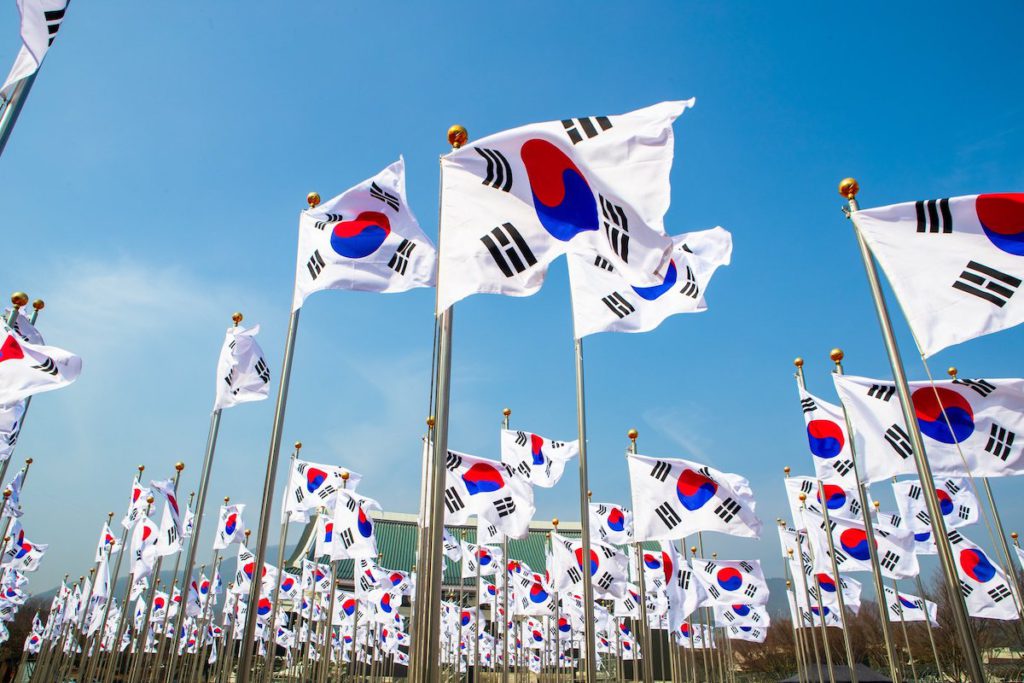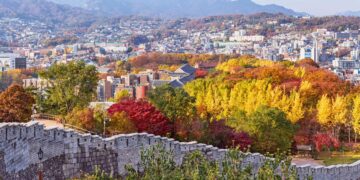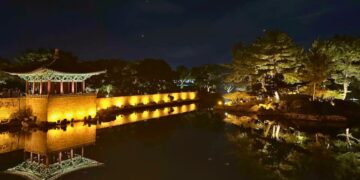Last Updated on 4 years by admin
The Independence Hall of Korea in Cheonan offers a deep insight into Korean history and culture. The Independence Hall of Korea collects, preserves, studies, and displays the history of independence movements during the Japanese colonial period. It opened in 1987 on the anniversary of Korea’s independence from Japan and was built through donations by South Koreans.
The museum buildings consist of three parts — History, Revolution, and Independence — which contain artifacts including photographs, models, costumes, and documents from the time.
How to Get to the Korea Independence Hall
The Korea Independence Hall is located in Cheonan, about 100 km south of Seoul. You can reach Cheonan from Seoul via many different options.
By Bus: Taking the bus between Seoul and Cheonan? The trip takes just over an hour. Buses 382, 390, 392, 400, or 402 will take you right to Independence Hall.
By Subway: You can take train Line 1 to Cheonan Station if you’re starting in Seoul Station. There, take bus 383 and get off at Independence Hall.
By Car: Parking is available at Independence Hall, and it’s also free.
Best Time to Visit the Independence Hall of Korea
The Independence Hall of Korea is a landmark that you can visit year-round. But spring and autumn are when the natural landscape turns beautiful, and visitors can experience bright flowers amid an evergreen forest.
While it may seem counter-intuitive to visit the indoor hall when it’s bad outside, visitors will find that it has its own beauty. The exhibition halls have been built with well-designed gardens on display.
History
The birthplace of freedom fighter and nationalist Ryu Gwansun is a testament to the nation’s history of hardship, struggle and perseverance. Her work with the Korean independence movement led to an unfortunate death in prison at the age of 24, but her legacy continues to inspire people all over the world. The Independence Hall of Korea allows visitors to discover Ryus legacy while teaching them the importance of respecting their own heritage.
Independence Hall of Korea: What You’ll See
The Independence Hall of Korea in Cheonan, South Korea, covers an area of 23,424 square meters. The site features 7 exhibition halls that contain ninety thousand artifacts, ranging from the past 5,000 years of Korean history to Japanese imperialism and independence movements.
Monument to the Nation
Upon your arrival at the Independence Hall of Korea, you notice a giant monument placed on the property. This is a large sculpture that represents the emergence of the Korean nation. It symbolizes the independence of the Korean people. At its greatest height, it reaches 167 feet and 51 meters.
Taeguk Square
Taeguk Square commemorates the 60th anniversary of Korean Liberation in 2005. This remembrance is seen by the 815 national flags here, each symbolizing liberation and hoisted around the Grand Hall of the Nation.

The Grand Hall of the Nation
It is the building that represents Korea’s Independence Hall. It is modeled after the Daeungjeon Hall at Sudeoksa Temple, a head temple of the Jogye Order of Korean Buddhism in Yesan County, South Chungcheong Province. The building houses many important national treasures, including the stone carvings of Buddha’s life that were carved by King Sejong the Great in 1446.
Sudeoksa Temple has been around for over 1,500 years and is one of the few temples that survived Japan’s conquests. It is a symbol of Korean cultural resilience and people who have worked diligently to pass their heritage on.
The Statue of Indomitable Koreans
Located at the heart of the Grand Hall, this memorial statue is symbolic of the Cheonji Lake located in Mt. Baekdusan.
Korean Independence Army Flag with Signature
The signature of the Korean Independence Army was quite something to behold. It told the story of a large-scale print located in the Grand Hall of the Nation, with signatures from when the organization was formed during the liberation. The original can be seen in the 5th exhibition hall.
Other Must-See Artifacts
>> Statues of famous Korean Independence activists
>>Opening ceremony of the Korean Independence Army’s headquarters
>>The portrait of Ryu Gwansun, a well-known independence activist
>>During, before, and after the Japanese occupation
>>Creation of the Tripitaka Koreana at Haeinsa Temple – National Treasure
>>Historic naval battle of Korea
Independence Hall of Korea in Cheonan is an excellent place to learn about Korean history. The exhibition area is huge, so it’s worth giving half a day to visit. Here is the place to learn about Korean history if you are interested!
12,074 total views, 12 views today

















